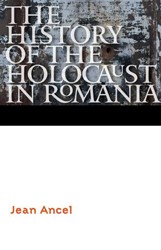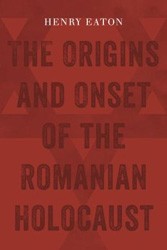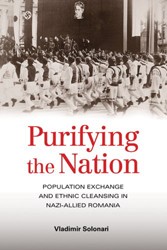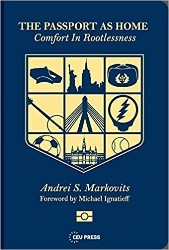By
– December 5, 2011
This is an important book that explores the memory and history of the Holocaust in Romania and Transnistria through the lenses of local memory and specificity informed by the transnational and trans-cultural understanding of the Romanian events in the wider context of Holocaust and genocide studies. While scholars now frequently interpret the Holocaust as a universal trope of suffering and persecution — a metaphor to explain genocide in other times and places — Romanians are still in the beginning stages of coming to terms with their country’s role in the Holocaust. And that role was particularly brutal and primitive. Whether it was slaughtering Jews and labeling them “kosher meat” during the Bucharest pogrom in January 1941, or executing thousands during the Iasi pogrom in June 1941, or asphyxiating thousands in sealed “death trains,” the Romanians brought a resolve and blood lust to the enterprise that, according to Raul Hilberg, forced the Germans to step in at times to slow down the pace of the killings. The Romanian experience shows, as the authors in this volume demonstrate, that it is misleading to talk about a “Holocaust” experience separated from its local context. There is still much research to be done on violence in the East, particularly at the fringes.
The editors and the authors, both from the West and from Romania itself, explore the memory of what happened, its representation and the implications for Romanian history as well as for our understanding of the Holocaust, anti-Semitism and the issue of the collaboration of locals. The essays in this volume discuss survivor accounts, letters and art work, as well as literature and film, in order to break the silence imposed by the communist regime and debunk the claim that the Romanian government and people were not complicit in the genocide against the Jews. There are also some excellent reflective essays on the impact of renowned authors like Paul Celan, Aharon Applefield and Eli Wiesel and film directors like Radu Gabrea, who have helped shape our understanding of the Shoah while working through their complicated relationships with their country and culture. This is a most worthy volume and particularly of interest to those who want to learn about the Holocaust in Romania and how contemporary Romanian intellectuals and artists are slowly coming to terms with what happened then and what it means for contemporary Romania today.
The editors and the authors, both from the West and from Romania itself, explore the memory of what happened, its representation and the implications for Romanian history as well as for our understanding of the Holocaust, anti-Semitism and the issue of the collaboration of locals. The essays in this volume discuss survivor accounts, letters and art work, as well as literature and film, in order to break the silence imposed by the communist regime and debunk the claim that the Romanian government and people were not complicit in the genocide against the Jews. There are also some excellent reflective essays on the impact of renowned authors like Paul Celan, Aharon Applefield and Eli Wiesel and film directors like Radu Gabrea, who have helped shape our understanding of the Shoah while working through their complicated relationships with their country and culture. This is a most worthy volume and particularly of interest to those who want to learn about the Holocaust in Romania and how contemporary Romanian intellectuals and artists are slowly coming to terms with what happened then and what it means for contemporary Romania today.
Michael N. Dobkowski is a professor of religious studies at Hobart and William Smith Colleges. He is co-editor of Genocide and the Modern Age and On the Edge of Scarcity (Syracuse University Press); author of The Tarnished Dream: The Basis of American Anti-Semitism; and co-author of The Nuclear Predicament.





